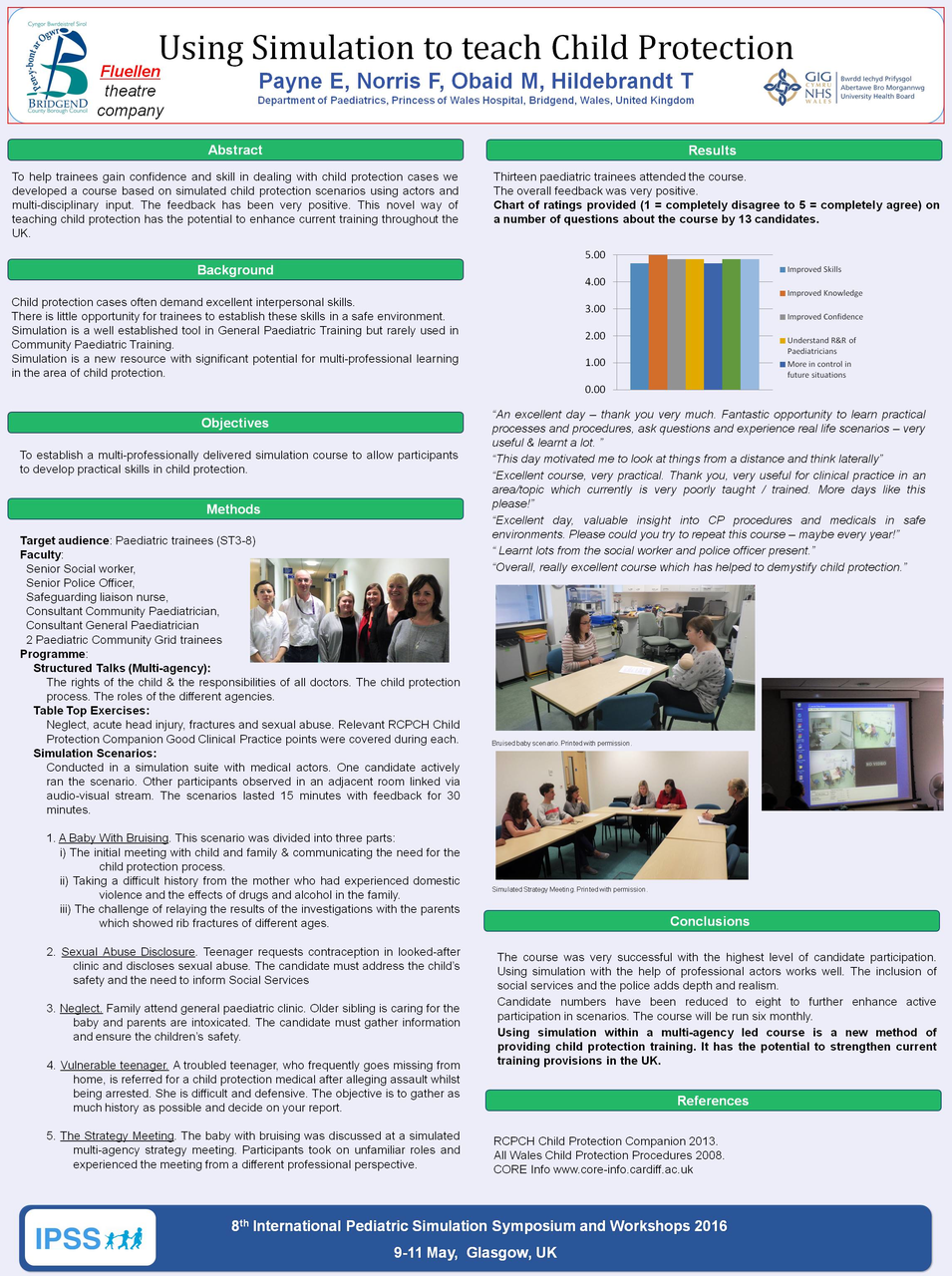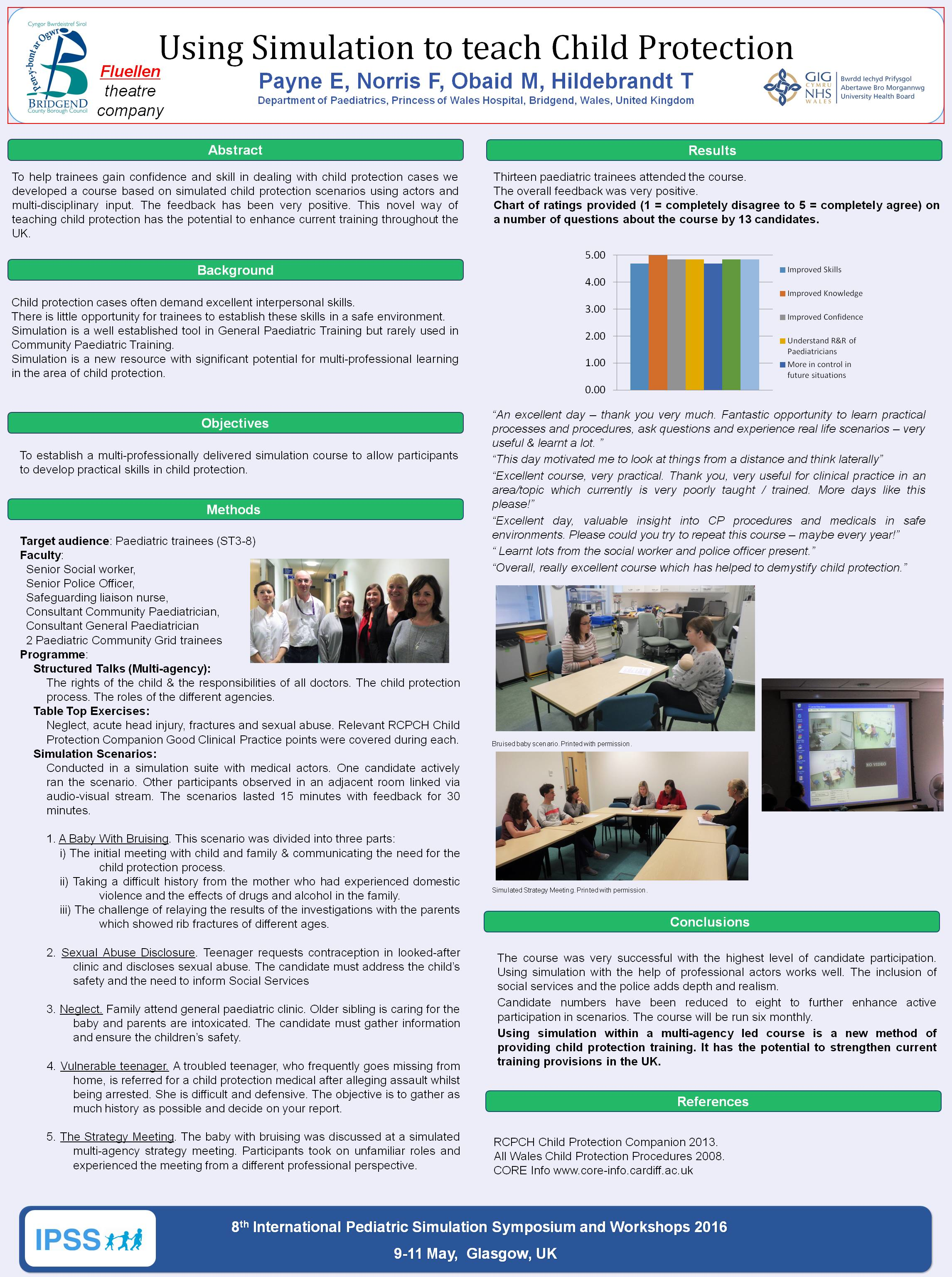Abstract
Background:
Addressing child protection concerns is a daunting task but there often is little opportunity to practice required skills. We felt this challenge could be aided using simulation. Simulation is used frequently and effectively to improve management of resuscitation situations but is rarely used for child protection.
Aim:
To develop a multidisciplinary delivered simulation course for paediatric junior doctors to develop and practice skills in child protection.
Method:
The course was aimed at paediatric trainees in the latter SHO years or early middle grade years. The faculty consisted of a senior Social worker, a senior Police officer, a Consultant Community Paediatrician, a Consultant General Paediatrician and two paediatric community grid trainees. The programme incorporated two structured talks and table top exercises in the morning.
The afternoon consisted of simulation scenarios conducted in a simulation suite, arranged mimicking a paediatric assessment unit. Three medical actors took various roles with one candidate actively running the scenario. The scenario was observed by all other participants in an adjacent seminar room linked via audio-visual stream from the simulation suite. The scenarios lasted approximately 15 minutes with feedback for 30 minutes. Scenarios covered were: seeing a baby with bruising, sexual abuse disclosure and a strategy meeting. The bruising scenario was divided into three parts; meeting the family for the first time and history taking, discussing the child protection process and then discussing results of investigations. This case was then discussed at a simulated strategy meeting.
Results:
Twenty one paediatric trainees attended the course. The overall feedback was very positive. Using a scale from 1-5 with 5 being positively “completely agree”, participants rated all feedback questions 4-5. Comments from the trainees showed that they enjoyed the simulation scenarios and multidisciplinary teaching the most.
Conclusions:
Child protection is a challenging issue for trainees to address. The skills required can be taught and practised using simulation. We found multidisciplinary delivered simulation to be a popular way to teach child protection to our trainees.





